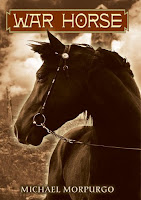Code Name Verity
Elizabeth Wein
YA
I have the very distinct impression I may be coming a little late to the Code Name Verity fan club, it's that good. Nonetheless, I can't not write about this story either. It's that riveting. It's historical fiction solidly based in history. It's storyline is so genuine, the reader is left wondering, "did it really happen"? Yet its characters are so relatable to today's young adults, there is no disconnect due to time period. Plus, the author put together an amazing author's note that explains what's real and what's not.
Basic plot line - two young British women, one a pilot, the other nobility, become friends while working in the British war effort. Queenie, the Scottish noble, becomes a spy whom Maddie, the pilot, flies her - as well as broken and repaired planes, other spies, soldiers, etc - around England and ultimately, over the Channel to France, where Queenie is caught and interrogated - first half of the book. The second half is about how Maddie, who had to crash land in France, tries to escape back to England.
The book is brimming over with fast-paced plotting and harrowing, edge of your seat, reading.
The format is interesting in that it is essentially a journal novel written from Queenie's and Maddie's POV. By alternating POV, the reader gets a more well-rounded, yet intimate viewpoint of what is going on both behind enemy lines and allied ones.
One of the aspects of the writing that most appealed to me is that Wein made each character human. That is, each has wants and desires, both abominable and universal. It's an interesting aspect to this particular novel. It wasn't easy to hate anyone flat out, except one secondary, but high-ranking Nazi official. Wein did a great job of character development, and in so doing, in bringing to life the intricacies of war and how enemy and ally aren't as one-dimensional as the history books of my young adult years painted them. The effect is something akin to that of The Reader, remaining long after the story itself is finished and begging for further discussion.
For other great Fall diversions, stop by Barrie Summy's website!
Border Issues
21 hours ago








